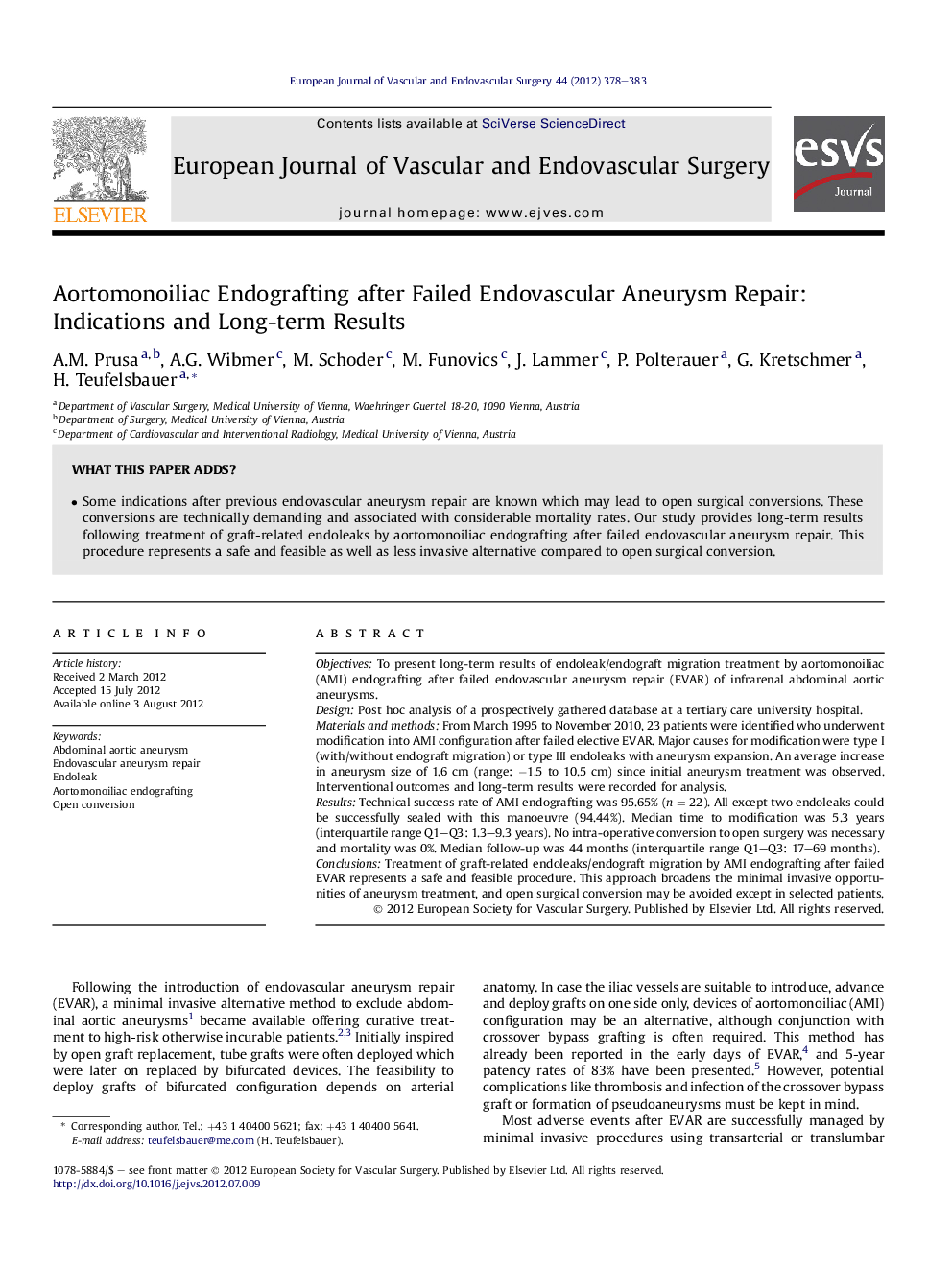| Article ID | Journal | Published Year | Pages | File Type |
|---|---|---|---|---|
| 2913124 | European Journal of Vascular and Endovascular Surgery | 2012 | 6 Pages |
ObjectivesTo present long-term results of endoleak/endograft migration treatment by aortomonoiliac (AMI) endografting after failed endovascular aneurysm repair (EVAR) of infrarenal abdominal aortic aneurysms.DesignPost hoc analysis of a prospectively gathered database at a tertiary care university hospital.Materials and methodsFrom March 1995 to November 2010, 23 patients were identified who underwent modification into AMI configuration after failed elective EVAR. Major causes for modification were type I (with/without endograft migration) or type III endoleaks with aneurysm expansion. An average increase in aneurysm size of 1.6 cm (range: −1.5 to 10.5 cm) since initial aneurysm treatment was observed. Interventional outcomes and long-term results were recorded for analysis.ResultsTechnical success rate of AMI endografting was 95.65% (n = 22). All except two endoleaks could be successfully sealed with this manoeuvre (94.44%). Median time to modification was 5.3 years (interquartile range Q1–Q3: 1.3–9.3 years). No intra-operative conversion to open surgery was necessary and mortality was 0%. Median follow-up was 44 months (interquartile range Q1–Q3: 17–69 months).ConclusionsTreatment of graft-related endoleaks/endograft migration by AMI endografting after failed EVAR represents a safe and feasible procedure. This approach broadens the minimal invasive opportunities of aneurysm treatment, and open surgical conversion may be avoided except in selected patients.
